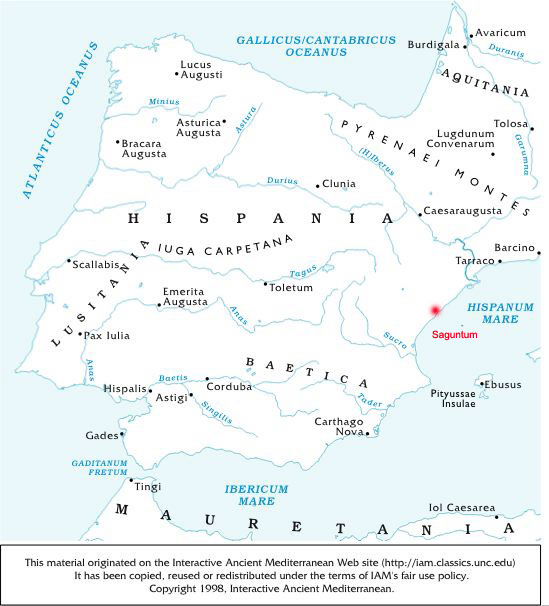Of Iberian origin, the town is the ancient Saguntum, which is thought to have been founded by Greek colonists from Zákinthos (Zante; whence its name).About 225 BC, the Romans, disquieted by the growth of Carthaginian power in Spain, concluded an alliance with the Carthaginian general Hasdrubal that guaranteed the independence of Saguntum and required his forces not to cross the Río Ebro.
In 219 BC, however, the town was taken by Hannibal, the brother of Hasdrubal, after a heroic resistance. Rome complained to Carthage, demanding Hannibal's surrender; this demand was rejected, and the Second Punic War began.
After the Romans recaptured Saguntum in 214, they restored its ancient importance; its inhabitants received Roman citizenship, and they enriched the town with the monuments of which the remains may still be seen. The Roman theatre built under the emperors Lucius Septimius Severus and Caracalla is the most notable building. There are also remains of different periods; the acropolis (fortresses on the curved crest of rock that dominates the city), the temples of the goddesses Diana and Venus, and the aqueduct (constructed in various structural types ranging from crude Iberian through Roman and Moorish). (Encyclopaedia Britannica Online.)
